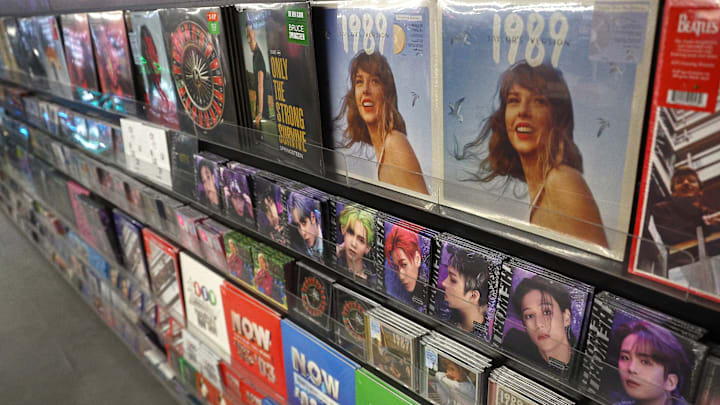In 2023, the U.S. music industry experienced its eighth consecutive year of growth, with revenues climbing by 8% compared to the previous year, reaching a total of $17.1 billion, according to a report released by the Recording Industry Association of America (RIAA). Streaming continued to dominate the market, making up a significant 84% of all recorded music sales. Within this category, paid subscriptions to on-demand streaming services hit a record high of 96.8 million, bringing in $11.2 billion.
This accounted for 78% of total streaming revenue and nearly two-thirds of the overall industry earnings. Matt Bass, RIAA VP, Research, Gold & Platinum Operations, noted: "Vinyl records alone grew 17% this period and are currently on pace to again break the billion-dollar barrier by year’s end."
The resurgence of vinyl records was also a notable highlight in the music sector. For the 17th consecutive year, vinyl sales grew, with revenues increasing by 10% to $1.4 billion. In terms of units, vinyl once again outsold compact discs, marking the second time since 1987 that this occurred.
A total of 43 million vinyl records were sold in 2023, compared to 37 million CDs. Vinyl accounted for 71% of physical-format revenue, which altogether reached $1.9 billion, a jump of 11% over 2022. This was while revenues from ad-supported on-demand services grew at "a slower pace than previous recent years."
Compact disc resurgence
Compact discs also saw a surprising uptick in sales. CD revenue increased by 11%, amounting to $537 million in 2023. Despite the dominance of streaming and vinyl, the continued demand for physical formats such as CDs and vinyl highlights the appeal of tangible music collections for many fans.
The RIAA's Chairman and CEO, Mitch Glazier, emphasized the broadening opportunities within the music industry. "Recorded music keeps reaching new heights as labels’ ‘all of the above’ commitment to meet fans everywhere they want to be continued to pay off for the entire music community," Glazier noted. He pointed out that new formats, genres, and platforms are driving the industry's success, offering artists and songwriters more ways to reach audiences (though, technically, for him, it is all about making money).
Glazier also expressed optimism that as newer streaming services gain full licensing and reflect the growing value of music, revenue for creators will continue to rise. However, he has warned of some things: "One of the RIAA’s main focuses is always fighting piracy," including "stream-ripping." Additionally, Glazier warned of "the mushrooming threat of generative artificial intelligence" in music as a potential competitor to standard, flesh and blood musical artists.
Still, for the most part, it seems things are on the up and up for the music industry.
Why vinyl?
This continued growth comes as the music industry adapts to evolving consumer preferences, with innovations such as high-fidelity audio and immersive listening experiences being introduced by streaming platforms. These technological advancements, alongside the sustained appeal of physical formats like vinyl and CDs, are helping to fuel the industry’s expansion. The consistent rise in vinyl sales is particularly noteworthy, considering the format's near-extinction in the late 20th century.
Once deemed obsolete, vinyl has made an impressive comeback, driven by audiophiles and younger listeners who appreciate the format's tactile nature and warmer "analog" sound quality. The resurgence has sparked a renaissance for record stores and led to exclusive releases and reissues of classic albums. This vinyl boom has coincided with cultural movements that embrace nostalgia and physical media, further boosting sales.
On that note, buyers of physical albums (or CDs) can also sometimes make money from the purchase by "flipping" it, which is obviously not as easy to do with a streamed song. There is also something more romantic about putting a record in a player than hitting play on some Spotify playlist. It would be tough to explain why it's more of a romantic listening experience for a couple — it just sort of is, perhaps similar to having a glass of wine or champagne available, even if you don't care for the stuff. Maybe romance and nostakgia just go hand in hand, and both aren't totally rational.
The future of music, for the industry, musicians, and fans
Streaming platforms, too, have played a key role in shaping the modern music landscape.
Music is good for other technologies, too. People are more likely to purchase and use smart speakers if they listen to music, for example; "90% of the 71 million smart speaker users in the United States use their devices to stream music – some listening for over six hours every week."
Companies like Spotify, Apple Music, and Amazon Music dominate the market, with their subscription services providing listeners with instant access to vast libraries of songs. This model not only offers convenience but also allows artists to reach global audiences. However, the debate over fair compensation for musicians from streaming platforms continues, as many artists feel that per-stream payouts are insufficient. Still, no revolutionary has truly stepped forward with a "user/artist-centric" model that has caught on extremely well.
The U.S. music industry’s financial success in 2023 shows its adaptability and resilience. While streaming leads the charge, the revival of vinyl and the steady performance of CDs show that physical formats remain relevant. As the industry continues to embrace new technologies and platforms, the future looks promising for artists, songwriters, and fans alike...at least until the songwriting robots take over and obliterate us all.
